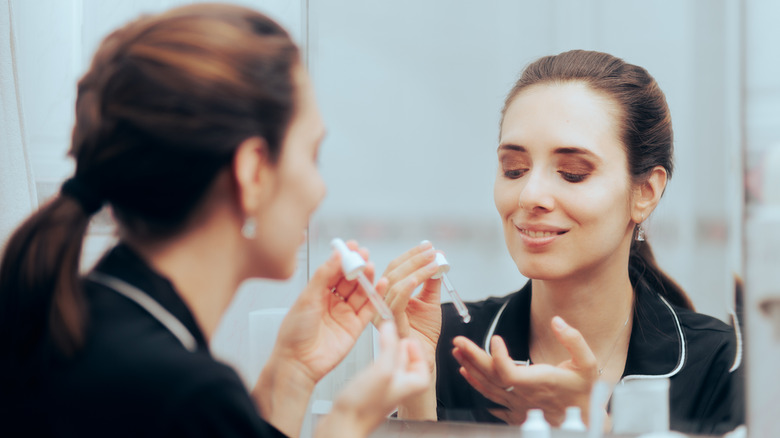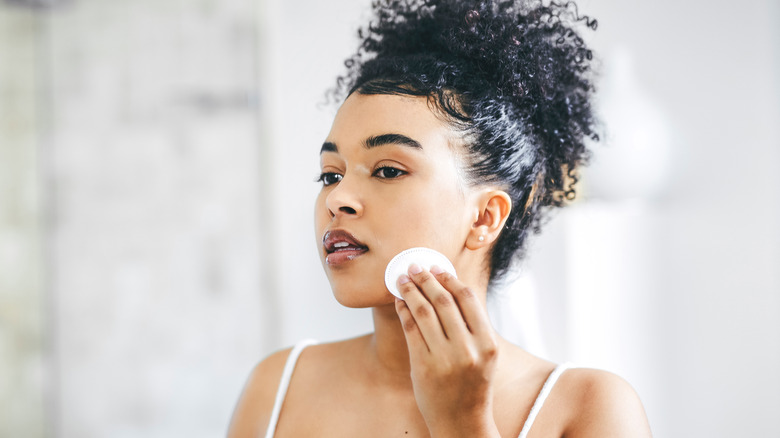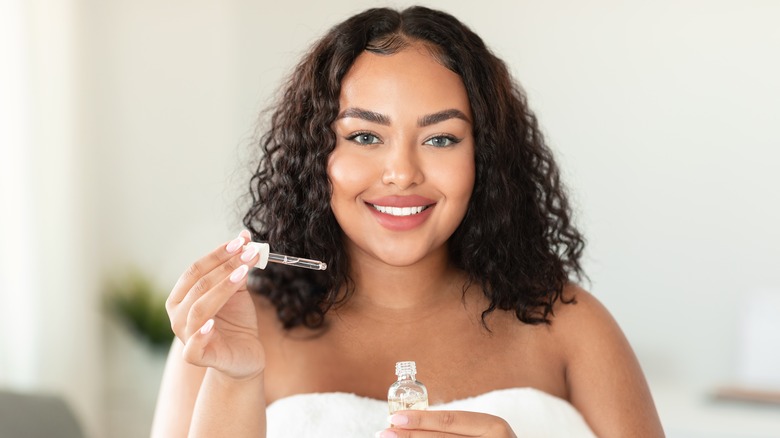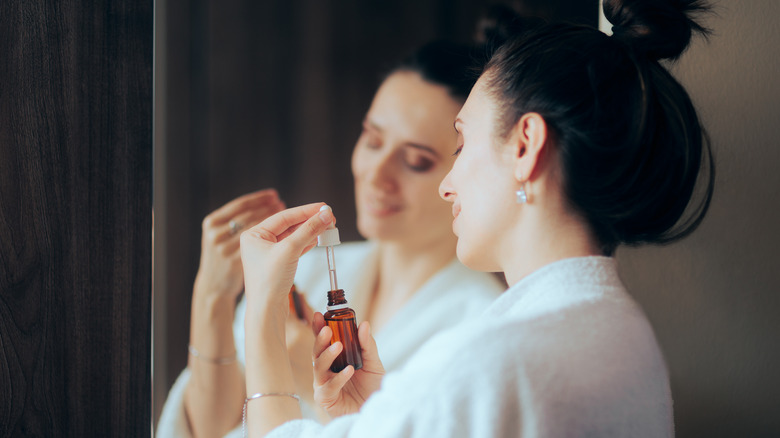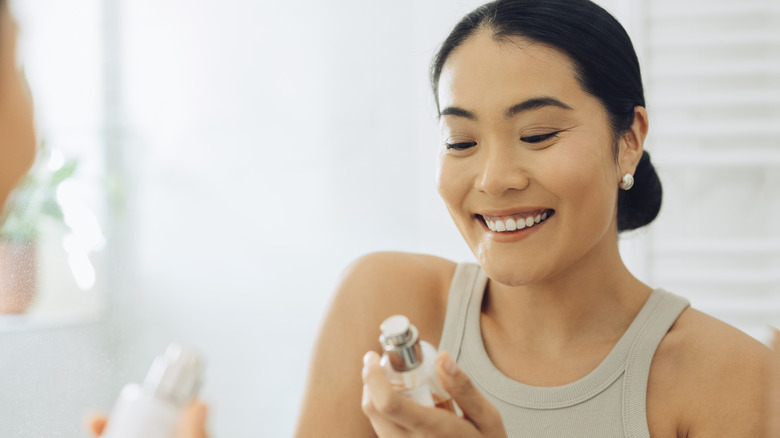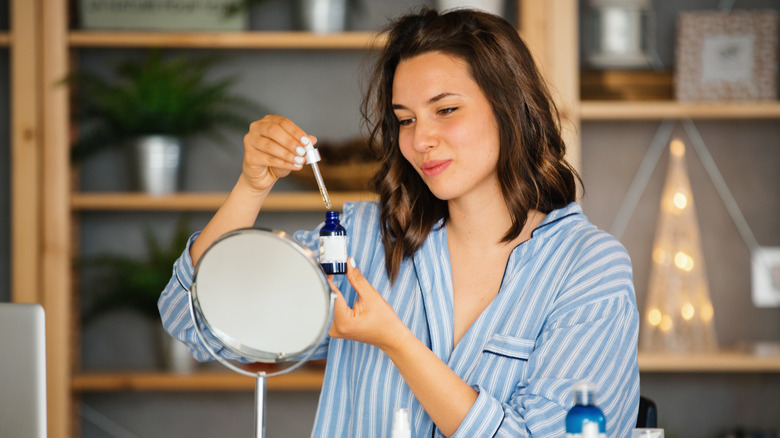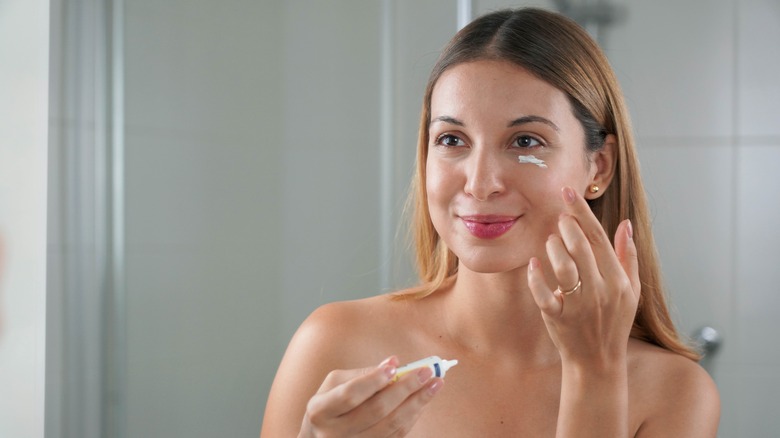Skincare Combos That Will Deliver Results (And Some You Just Shouldn't Try)
It's easy to forget when it comes to skincare that not everything goes with everything. We often mix and match our various skincare products without even really thinking about it, combining or layering products without giving a second thought as to whether they'll actually complement or work against one another. But just because a product contains ingredients designed to help the skin, that doesn't necessarily mean they're all going to work well together. "Mixing ingredients without proper knowledge of how these ingredients work and what other ingredients they may interact with will be not only a waste of money but also time. It can also lead to frustration if less than expected results are seen (or if the skin becomes irritated)," Dr. Shari Marchbein, a board-certified dermatologist, explained to InStyle.
Of course, there are some skincare ingredients that go perfectly well together and can even improve each other's effectiveness. But there are also some combos you're best to avoid. Just remember to always practice caution and seek the advice of a dermatologist if you're ever unsure about the side effects of something you're using, and always do a patch test before introducing anything new into your routine. "It's important when mixing skincare ingredients that you are confident you have the knowledge needed to do it correctly and effectively," consultant dermatologist and British Skin Foundation spokesperson Dr. Sivanie Sewell told Refinery29. But, well, what combos actually work and which don't?
Mix retinol with hyaluronic acid, not vitamin C
Retinol is one of the hottest ingredients in the skincare game right now. It can be used by almost anyone because it offers a range of results to improve the skin. Retinol encourages collagen production and is a form of vitamin A, and it works really well with hyaluronic acid. That's because hyaluronic acid is super moisturizing for the skin, so it will cancel out a lot of the dryness retinol can cause. Board-certified dermatologist and founder of Skinfluence, Marina Peredo, M.D., revealed to Byrdie that hyaluronic acid actually improves the effects of retinol, because it helps the skin to be more permeable and, therefore, more absorptive.
But just because retinol has so many benefits, that doesn't mean you should mix it with anything and everything if you want to get the best results. One of the things you should probably steer clear of when applying your retinol is vitamin C. Though you can use both in your beauty routine — and it's perfectly safe to do so — you're better off applying retinol at night and then vitamin C in the morning rather than combining them. "I generally don't recommend layering these two products, but they work very well with alternating use," board-certified dermatologist Dr. Anna Guanche, M.D., FAAD told TZR.
Hyaluronic acid works with polyglutamic acid, too!
Oh, that hyaluronic acid. It's (almost) a friend to everything! Another product it's proven to work well alongside is polyglutamic acid, as putting these two together will get you optimal results from each. As we already know, hyaluronic acid is a great moisturizer — and so is polyglutamic acid. That's why using the two together can help your skin retain even more moisture than it would when using the two separately, as polyglutamic acid will work to lock in extra moisture when mixed with hyaluronic acid by essentially creating a healthy film over the skin to stop water escaping.
"Polyglutamic acid, like hyaluronic acid, is a humectant that binds water. But unlike hyaluronic acid, the PGA molecule is a water-soluble peptide with a larger molecule size, which means it doesn't penetrate as deep into the skin," board-certified dermatologist Hadley King, M.D., explained to Nichols MD. "[Combining them] creates visible plumping, because these two humectants are working at different levels in the skin," she added.
Keep the glycolic acid away from the salicylic acid
Though putting glycolic acid and salicylic acid onto your face a few minutes apart (around 10 minutes is the optimal time to avoid most bad side effects) shouldn't create too much of an issue, it's not exactly recommended that you mix the two or apply them together at the same time. Both are pretty potent on their own, and so, the two combined could end up doing more bad than good by irritating the skin.
Glycolic acid and salicylic acid both work to resurface the skin by getting rid of dead cells in order to leave a brighter complexion behind, so mixing them could actually end up damaging the outer layer of skin. When that happens, it's never a good thing, as it leaves your face more susceptible to things like sun damage — not to mention it can be super uncomfortable, red, and itchy.
It's a myth you can't mix niacinamide and vitamin C
You may have heard that mixing niacinamide (a form of vitamin B3) and vitamin C is a bad idea, but that's not strictly true. Back in the 1960s, a study suggested that mixing them actually created nicotinic acid, and, as board certified dermatologist and dermatologic surgeon at KMC Hair Center Dr. Meena Singh told Healthline, nicotinic acid can cause serious irritation to the skin. But the good news is, that study has since been proved unreliable and discredited. That's because, during the study, the two were combined at an extremely high temperature which, in everyday life, they likely wouldn't be. It's absolutely fine to mix them and use them at the same time, as the likelihood of them creating nicotinic acid in an everyday, cooler temperature is minimal.
That's all pretty good news, as applying niacinamide and vitamin C together means you can reap the many benefits of both ingredients. "Given the multitude of benefits of both of these ingredients, and the complementary nature of these benefits, they're a powerful combination," dermatologist Emily Arch, M.D., explained to Byrdie. Among the many pluses? Brighter skin, more hydrated skin, and increased collagen production.
Alpha hydroxy acids can benefit from squalene — but not retinol
Alpha hydroxy acids (also known as AHAs) can be quite severe on the skin, as they work to resurface the skin through exfoliating the top layer and revealing the brighter skin underneath. Because of that, though, they can sometimes cause irritation or leave the skin feeling a little sore. That's why mixing it with something like squalene will sooth any irritation and play down any exfoliation side effects (because you always want to be careful to avoid any exfoliation mistakes). "If you're using potentially irritating ingredients like AHAs or BHAs in an exfoliant or serum, apply a calming product afterwards, like a moisturizer that contains squalene," board-certified dermatologic surgeon Dendy Engelman, M.D., told Ipsy. Squalane is good for helping the skin feel more soothed and moisturized, combatting the dryness that AHAs can sometimes leave behind.
There are a few things you should probably avoid applying at the same time as anything containing AHAs, though. We'd recommend not applying any other facial scrubs at the same time, as that can cause serious irritation. You should also take care when it comes to retinol, vitamin C, and benzoyl peroxide, and instead, only use any of these ingredients at alternate times.
Avoid mixing beta hydroxy acids with benzoyl peroxide
Beta hydroxy acids (which you may know better as BHAs) don't usually play so nice with benzoyl peroxide, so you'll want to avoid mixing the two and applying them at the same time if you can. Similar to glycolic acid and salicylic acid, BHAs and benzoyl peroxide are designed to exfoliate the skin and essentially strip it to show off newer, fresher skin. Because of that, combining the two could become too overwhelming for your face and could result in adverse reactions, like irritation and redness or even skin peeling. Not to mention, it will leave your face feeling pretty dry, which can be very uncomfortable.
"Decreased tolerability is a concern whenever exfoliants (physical or chemical) are combined," board-certified dermatologist, president of Amarté, and founder of Dermstore, Dr. Craig Kraffert explained to Byrdie. "These ingredients all cause cell turnover and some degree of exfoliation. When combined, it would cause severe skin irritation," added Michele Green, M.D., a board-certified cosmetic dermatologist. Because of that, you'll also want to avoid combining BHAs with products like retinol as well.
Don't combine benzoyl peroxide and vitamin C, either
We know, it seems like there are a lot of dos and don'ts when it comes to vitamin C, but another ingredient you're going to want to avoid using with it is benzoyl peroxide. We already know that benzoyl peroxide is an effective exfoliant you shouldn't apply at the same time as beta hydroxy acids, but you'll also want to keep it away from the vitamin C, as well. The reason why is because benzoyl peroxide's strength can mean it leaves the skin irritated. "Rinse-off products or lower strength benzoyl peroxide is generally better tolerated for those with sensitive skin," Dr. Sivanie Sewell, a consultant dermatologist, suggested to Refinery29.
You can still use both in your skincare routine, though, just not at the same time. "If you want to use benzoyl peroxide and vitamin C, retinol, or AHAs and BHAs in your skincare routine, use vitamin C in the morning and benzoyl peroxide at night," Dr. Sewell added. "You can also alternate benzoyl peroxide with retinol and AHAs and BHAs every other night." A few other things you'll want to avoid mixing with benzoyl peroxide? Retinol and AHAs or BHAs. "Benzoyl peroxide should not be combined with retinol, as they can render each other less effective," dermatologic surgeon Dendy Engelman, M.D., explained to Ipsy.
Applying vitamin C with ferulic acid has plenty of benefits
Something you can mix your vitamin C with, though? Ferulic acid. Both are from the antioxidant family, and the latter can actually be used before applying vitamin C to get your skin ready to receive all of its benefits, essentially making your vitamin C product extra effective. As dermatologic surgeon Dendy Engelman, M.D., shared with Ipsy, "Ferulic acid helps stabilize vitamin C (which is known to deteriorate quickly if exposed to sunlight), so by using ferulic acid and vitamin C together, you extend the life of your vitamin C products. And when paired together, these two ingredients have a synergistic effect that boosts their antioxidant properties."
Assistant clinical professor of dermatology at Yale New Haven Hospital, Dr. Deanne Mraz Robinson, agreed that these two complement each other, noting while speaking to Healthline that putting your vitamin C with ferulic acid will also help with some of the former's vulnerabilities. Most notably, it will keep the vitamin C on your face longer as it won't deteriorate when it comes into contact with things like intense heat or bright light.
Sunscreen can be combined with retinol, antioxidants, and so much more
We know you already know that SPF is a must every single day, even when it doesn't look overly sunny outside, which is great news because it can actually be mixed with pretty much any other skincare ingredient you can think of. In fact, it's actually extra encouraged you apply sunscreen to your face if you're using anything that's working to resurface your skin that may increase how sensitive it is to UVA or UVB rays, such as retinol.
The only thing you'll want to keep in mind when it comes to picking out your sunscreen and mixing it with other ingredients is making sure it works for your specific skin type. For example, if you have dry skin, you may want to combine your SPF product with hyaluronic acid to keep your skin feeling moisturized. Adding antioxidants (like vitamin C) to your sunscreen is also strongly encouraged. "The addition of antioxidants to sunscreen is hugely beneficial because it further protects our skin from free radical damage that can lead to premature aging," dermatologic surgeon Dendy Engelman, M.D., said while speaking to Ipsy. "Antioxidants play the dual role of preventing skin damage from environmental aggressors and reducing signs of damage after they occur."

